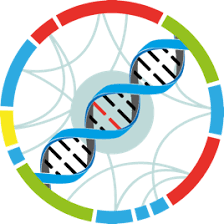Study : Identification of genes associated with pistil development by transcriptome analysis of a female sterility mutant (fsm) in Chinese cabbage (Brassica campestris ssp. pekinensis)
Identification
Name
Identification of genes associated with pistil development by transcriptome analysis of a female sterility mutant (fsm) in Chinese cabbage (Brassica campestris ssp. pekinensis)
Identifier
dXJuOkVWQS9zdHVkeS9QUkpOQTMwODkzNg==
Description
The female sterility mutants are ideal materials for studying the pistil development in plants. We identified a female sterility mutant (fsm) exhibiting stable inheritance, which was derived from a Chinese cabbage DH line ‘FT’ using the combination of isolated microspore culture and ethyl methanesulfonate (EMS) mutagenesis. Genetic analysis indicated that the phenotype of fsm was controlled by a single recessive nuclear gene. The morphological observations revealed that the differences in the floral organs were significant between fsm and its wild type ‘FT’, the pistil of fsm was smaller and shorter, especially the ovary; and the degenerated ovule in the ovary may directly result in the female sterility. Comparative transcriptome analysis of ‘FT’ and fsm were performed using RNA-Seq. A total of 1,872 differentially expressed genes were identified between ‘FT’ and fsm. Of these, a number of genes involved in the ovule development were found, such as PRETTY FEW SEEDS 2 (PFS2) and temperature-induced lipocalin (TIL), and these genes were all up-regulated in the fsm vs. ‘FT’ comparison. Furthermore, GO and KEGG pathway enrichment analyses of DEGs suggested a variety of biological processes and metabolic pathways were significantly enriched during the pistil development. In addition, the expression patterns of eighteen DEGs were analyzed using qRT-PCR to confirm the accuracy of the RNA-seq data. A total of 31,272 single nucleotide polymorphisms (SNPs) were specifically detected in fsm, which could be directly related to the female sterility phenotype. These results contribute to increase our understanding of the molecular mechanisms of pistil development in Chinese cabbage. Overall design: The RNA from the developing flower buds of a female sterility mutant (fsm) and its wild type‘FT’at the full-bloom stage in Chinese cabbage were sequenced by RNA-Seq, in triplicate.
Genotype
| Accession number | Name | Taxon |
|---|
